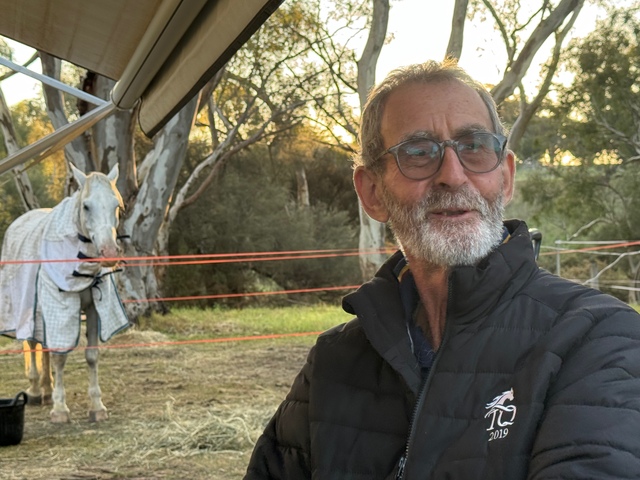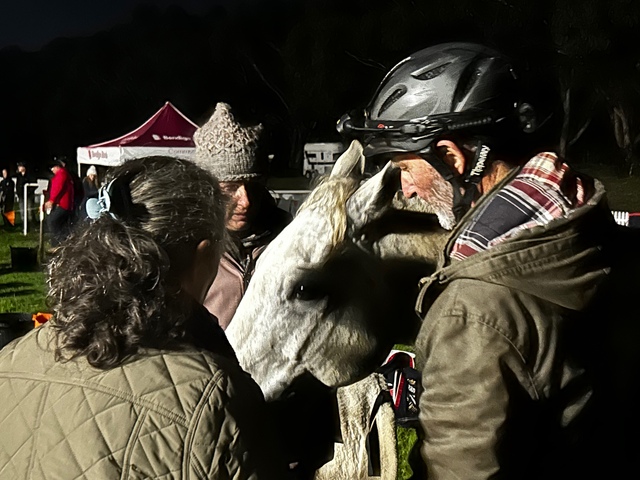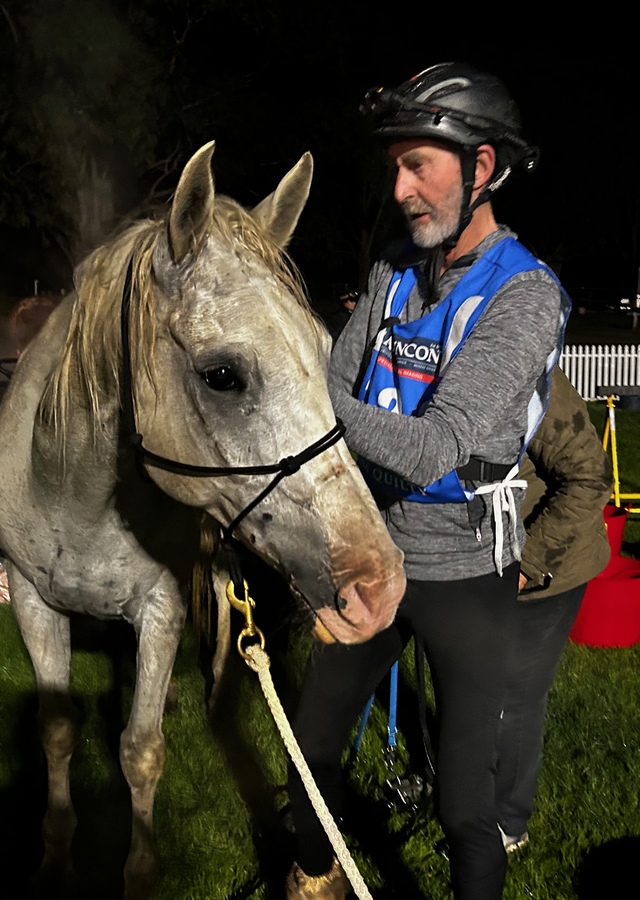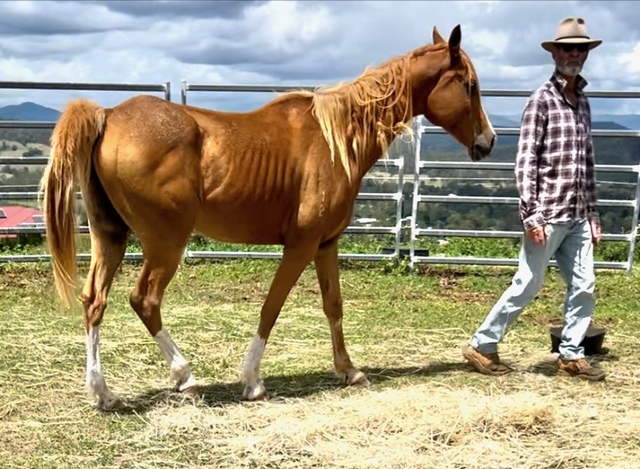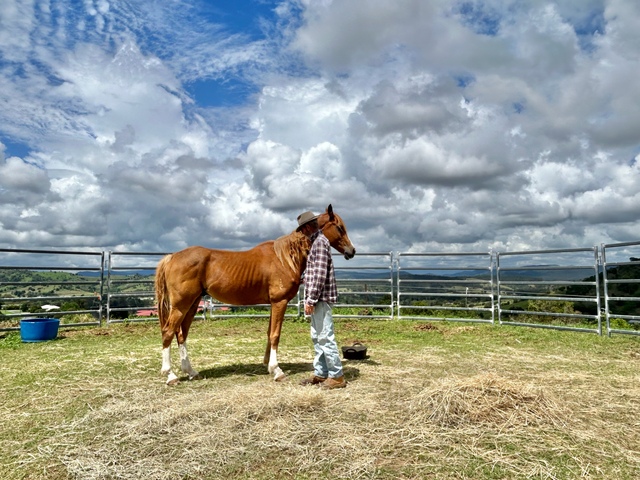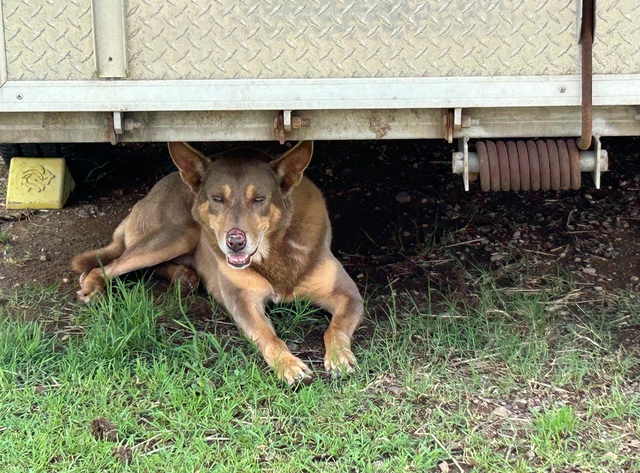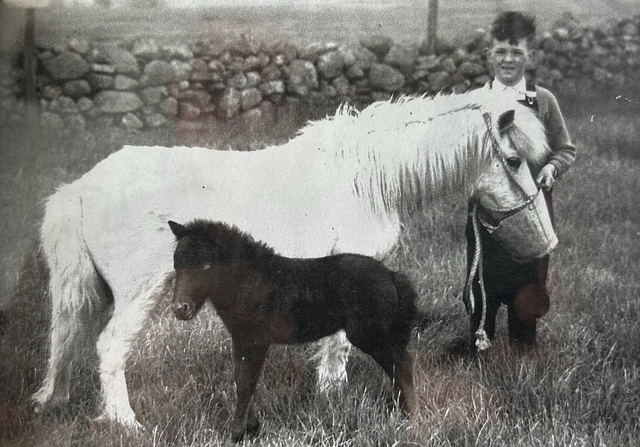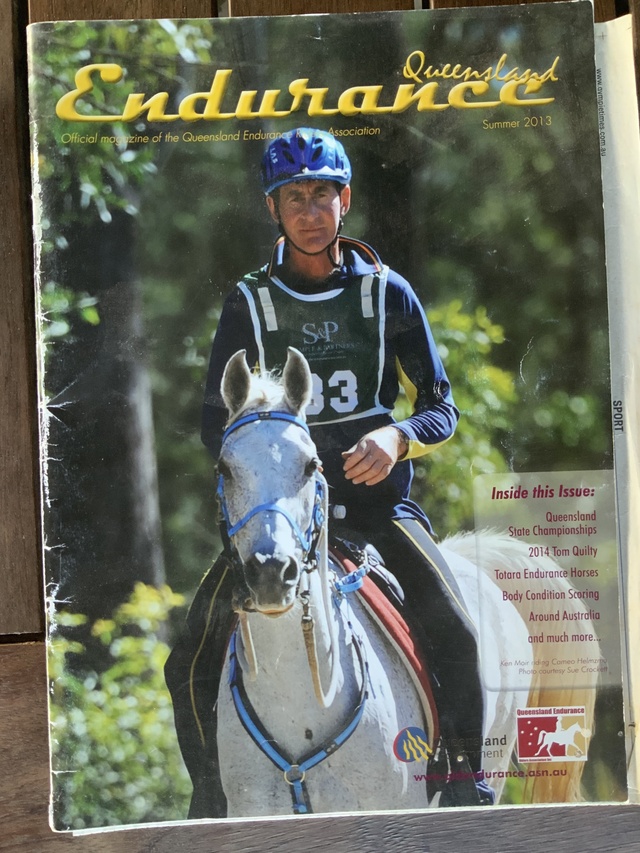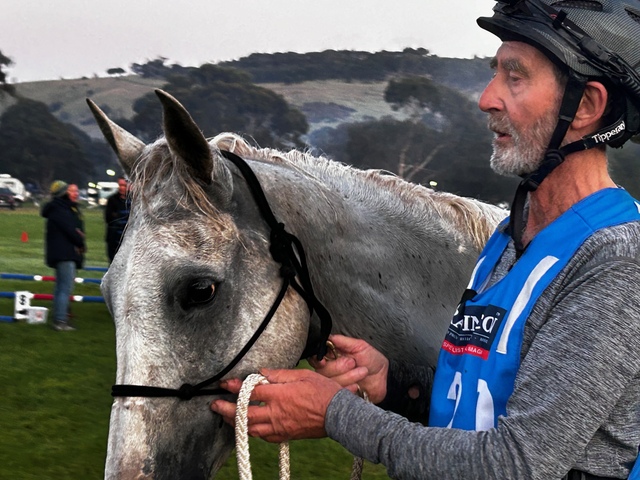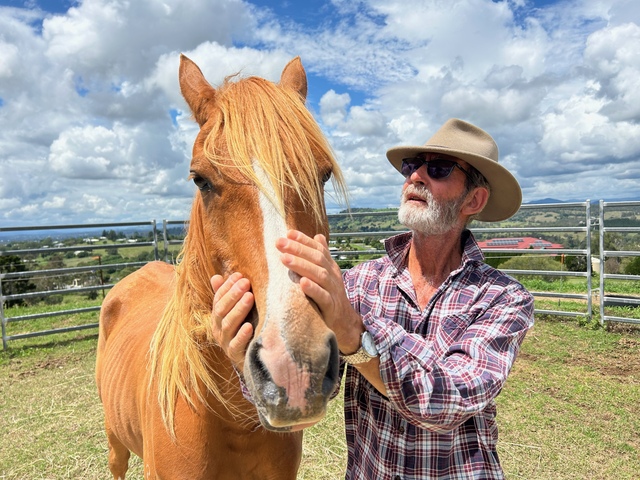
The care, the responsibility and the companionship of horses play a big part in the physical and mental health of riders. ERLE LEVEY talks to Ken Moir, who has been around horses for six decades.
“There’s an attachment to horses on the physical side but also the mental side.”
There is nothing so good for the inside of a man as the outside of a horse.
That’s the truth, according to Gympie’s Ken Moir.
And he ought to know. Ken started riding horses at the age of three. That was in Scotland with his older brother Alex.
Now, in his 70s, Ken owes much of his physical and mental health to horses, particularly with endurance riding.
The Kilkivan Endurance Blue Ride for Men’s Health scheduled for last weekend had to be cancelled due to the rain and storms.
Yet it wasn’t for the want of enthusiasm for the ride, and Queensland Endurance Riders Association (QERA) is looking to reschedule the event in the new year.
Although disappointed, the Kilkivan Endurance Riders Club said the location of the ride had rainfall in excess of 100mm in one night and this, on top of several storms over the previous few days, led to the call being made.
There was potential for more storms on the Saturday, meaning lightning and thunder activity.
The ride base was compromised and the area to be used for holding horses would be restricted.
The number of horses travelling over paddocks opened up by landowners would have chopped up the land.
For Ken Moir, the relationship between horse and rider has been invaluable.
I spoke with him during the 2024 Tom Quilty Gold Cup at Wirrina Cove in South Australia. Then again this week at Chatsworth, where he was working with a rescue horse.
Persistence beats resistance is what he lives by.
I have seen Ken a number of times working softly with horses – taking time to gently persuade a horse to cross water where the reflections can spook it.
Then again, I watched him slowly twirl a rope in his hands in the peripheral vision of a horse to encourage the horse to walk up the ramp into a float.
Both times there was much more success from this approach rather than using force.
Endurance riding is about understanding the horse so that the course can be safely negotiated.
The 160km course needs to be completed within 24 hours, with the Tom Quilty regarded as Australia’s premier endurance event.
“There’s an attachment to horses on the physical side but also the mental side,’’ Ken said.
“It brings about a commonality with horsemanship. They have this connection with the horse.
“That’s what the addiction is. It continues our attachment for hours upon hours rather than just a few minutes.’’
With almost 70 years of working with horses, Ken attributes the connection with his health and fitness.
So much so that the quality of his riding now is as good as when he won the Queensland State Championships in 2013 and 2015.
Back then he weighed 89kg – almost in the heavyweight division. Now, at 80kg, he is feeling really fit.
He has undertaken 174 rides and covered nearly 16,500 km, earning six Tom Quilty buckles along the way for completing the event.
He finished fourth middleweight in last year’s landmark Winton To Longreach Ride – 220.0km in 18 hours 52 minutes.
“It’s better for me than sitting in the truck or lifting pipes,’’ he said.
“Doing five days a week and 30 km a day riding and exercising the horses – if you ride properly it strengthens your core and your back.
“The amount of time hunched over a computer or phone impacts posture and eyesight.’’
The physicality is keeping fit yet horses can be fundamental to the mental side.
The Blue Ride for Men’s Health is a QERA initiative that has been talked about for some time due to the success of the Bony Mountain Pink Ride for Breast Cancer at the start of the year.
The fact is we talk about women’s health quite openly today.
Not so much in previous times but it has been a more public thing in the past 30 years.
Men are different. They do not talk about things as much.
Those who saw the real horrors of war tend not to talk about them.
Men see themselves as needing to be strong but that tends to lead to being silent, when in fact they are unsure.
Australian men are more likely than Australian women to get sick from serious health problems.
Their mortality rate is also much higher. They die in greater numbers than women from almost every non-sex-specific health problem.
Overall, for every two women who die, three men die.
However, Australian men generally enjoy better health and longer life expectancy than men in most other countries in the world.
In some areas, they now maintain good preventive health practices – only one in 10 men smoke daily. This is far removed from the 1920s when more than half of the young male population smoked cigarettes but that figure has progressively declined.
Today, 27 percent of men maintain recommended physical activity levels.
Mental disorders are the third most common health issue in Australia (14 per cent of the total), after cardiovascular diseases (20 per cent) and cancers (19 per cent).
Anxiety, loneliness, stress and depression are the most common factors.
There are many factors why men’s mental health issues may go unrecognised for a long time.
Social norms and expectations pressure men to be strong, stoic and independent. Upbringing and role models can teach them to cope with problems by themselves or use unhealthy coping mechanisms.
There can be a feeling of being ashamed or embarrassed to seek out help, as well as a lack of awareness about the signs and symptoms.
That brings us to the question of how often men get a medical check-up.
It’s about taking best care for yourself to enjoy your life, and not being ill.
Men are not the best at doing preventative care. We get caught-up in the busy-ness of life and can easily let things slip.
The Movember campaign for awareness of prostate cancer has been going for a while.
The Blue Ride is seen as a low-key strategy – the start of an ongoing campaign but done in a non-intrusive way.
For Ken Moir and his older brother Alex, they have been involved with horses right from their early days growing up in Scotland.
“With endurance riding, you’re looking after an animal which is under your responsibility and care,’’ Ken said.
“You really have to look after it. Do all the things you can to make sure it is fit, and as healthy as possible.
“For me, it’s not a beauty contest for the horse. As long as it is good inside and good mentally.
“They’re a working animal.
“With endurance generally, it’s not such a big issue about riding style. It’s a matter of settling into a rhythm and then when you need to increase the pace you can.’’
This week I watched Ken work with a 12-year-old rescue horse that has been traumatised in some way.
He was a good looking gelding but lacking in condition and hadn’t been handled much.
“He is semi wild and never been ridden,’’ Ken said, “but has a really nice nature.
“He’s a very soft horse but very afraid. He has beautiful eyes.
“When he came here, he was quite wild and just running around. Now he will come and follow me around.’’
It was just amazing to see the way he follows Ken.
There were scars that could have been from being caught up in fencing at one time, but the horse has that innate feature of being curious about humans … wanting to be friends.
As well as moving around the yard, he would quite easily walk up to Ken and breathe the same air.
“I want to get him going under saddle,’’ Ken said. “So I’ll ask Gavin Bartlet to do it.
“He’s been working with horses all his life, following Buck Brenneman.
“Buck was the advisor to the film The Horse Whisperer with Robert Redford, about a horse that had been in an accident and was rehabilitated.
“I see a horse such as this and realise it’s got so much potential – so much good breeding – so we will give him a chance.
“Poor treatment brings resentment.
“With horses, they can understand people.’’
When you’re interacting with horses you have to be mentally as well as physically fit, Ken said, otherwise you’re not going to do as well.
“You have to understand that the horses are a prey animal and humans are a predator. So you have this prey-predator dichotomy.
“As the relationship builds, the man becomes less of a predator and the horse less of a prey animal.
“It’s about building up understanding rather than force, fear and intimidation.’’
Sadly, many people rely on that. They revert back to being the dominant animal if a horse or a dog reacts in fear.
“While a dog is a predator as well, you can see how they become confused if accidentally badly treated. They don’t know what to do or how to react to that.
“It’s the same with horses.’’
That interaction with horses can also be where people get tied up, Ken said.
“If you’ve got a horse, don’t think you’ve got to ride it … you don’t. You can treat them like a dog and just have them around.’’
For endurance horse riders there is the aspect of going for a ride of a morning, just like going for a walk or a bike ride.
“It’s exercise in the fresh air,’’ Ken said, “… a way of giving perspective to the day.
“It’s a bond. It’s an acceptance between you and the horse and that’s a very good thing for the emotions.
“Just like dogs, they can smell suspicion or nervousness.’’
At Wirrina Cove in late October, Ken and his horse Soliloquy, a 10-year-old Arabian gelding, were very competitive in the first two 40km legs of the Tom Quilty, riding into third or fourth position at some stages.
Yet on the third leg he was riding with Peter Field and both sensed some sort of issues with their horses.
“Peter knew his horse was acting up a bit. He was saying, when we come in, I’m going to withdraw. Yet I was looking at continuing as the horse had picked up.
“He had me bluffed – I thought he was trying to tell me something but I was reading him incorrectly.
“Being 10km from home made for a long walk with the horse but it was the best thing.
“We were basically off our horses and walking because we understood they were not up to completing the course.
“Yet we realised, we’re here, we’re at the Quilty.
“Look at the environment. A beautiful spring day, grass blowing in the breeze.
“We were walking towards the ocean at the time so we said: ’Okay, our day hasn’t gone as planned but there’s a lot to like about it. It’s not all negatives.’
“That’s how we chatted on the way home. That ability to talk with someone openly with the horses.
“Someone you’ve known for awhile. Both had some issues on the day and we’d resolved to the fact the ride finishes here.’’
In his life Ken has been involved with bringing damaged horses and damaged humans together so they can find a bond of caring for each other.
“There should be more of that, I believe.
“You don’t need to ride horses. You can just interact with them.’’
We see young people who are unsure being around horses but after a few weeks of encouragement they will reach out and pat the horse.
Then they move onto hand feeding them. It’s amazing to see the delight in their faces.
“You need to be interacting with horses on a daily basis,’’ Ken said, “otherwise you don’t feel good.
“It’s like gardening – constant attention is better than waiting for six months.
“Horses need the attention and so do you.
“To have a prey animal allow you to ride them. I still think it’s fascinating as to why they allow us to do it.
“They do allow us, at the end of the day.’’
Ken reflects on American author Tom Dorrance who, with his brother Bill, are considered founders of the modern natural horsemanship movement.
On his deathbed, Tom was asked what he would like to pass on – anything he may have left out.
“Never knock the curiosity out of a young horse.’’
You could certainly apply that to a young person as well.

